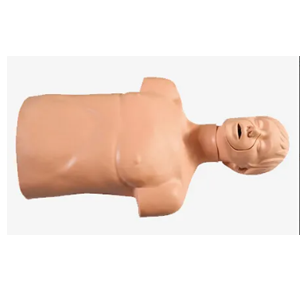Airway infarction and CPR models in adults: How to adapt to new emergency standards
With the deepening of medical research and the rapid development of first aid technology, the first aid standards of adult airway infarction and CPR (cardiopulmonary resuscitation) are constantly updated and improved. In order to ensure that medical personnel can respond quickly and accurately in emergency situations, adult airway infarction and CPR models must keep up with The Times and constantly adapt to new emergency standards.
First, the design of the model needs to be closely integrated with the latest first aid guidelines and research findings. This requires manufacturers to work closely with medical experts and scientific institutions to keep abreast of and incorporate the latest first-aid concepts and techniques, and to adjust accordingly to ensure that training is consistent with practice.

Second, models need to simulate more complex and diverse first aid scenarios. The first aid process of airway infarction and CPR in adults is often accompanied by a variety of unpredictable factors, such as patient size, severity of the condition, and environmental factors. Therefore, the model should be able to simulate different body types of patients, various types of airway infarction, and complex emergency environments, so that healthcare workers can encounter and overcome various challenges in training.
In addition, the model should also have intelligence and feedback functions. The model can evaluate the operational performance of the medical staff in real time and provide personalized feedback and recommendations. This intelligent training method can not only improve the training effect, but also help the medical staff to correct the wrong operation in time to avoid similar problems in actual first aid.
Finally, the model needs to be updated and maintained regularly. With the constant change of first aid standards and the continuous progress of medical technology, the model also needs to be upgraded and reformed accordingly. Manufacturers should provide comprehensive after-sales service and technical support to ensure that the model is always consistent with the latest first aid standards. At the same time, the medical institution should also regularly maintain and check the model to ensure that it is in good working condition.
In conclusion, the adult airway infarction and CPR model, as an important tool for medical personnel to improve their first aid skills, must keep up with the pace of The Times and constantly adapt to new first aid standards. By closely integrating the latest research results, simulating complex emergency scenarios, intelligent feedback, and regularly updating maintenance measures, we can ensure that the model remains advanced and practical, providing efficient and accurate training support for medical personnel.












